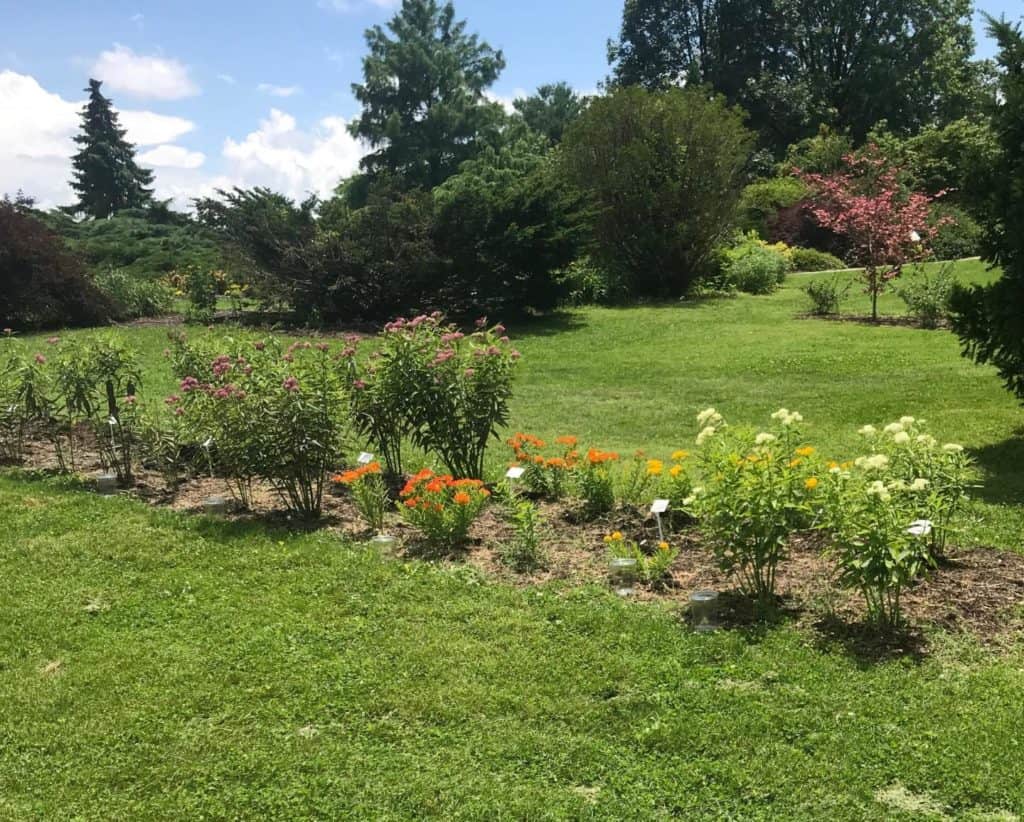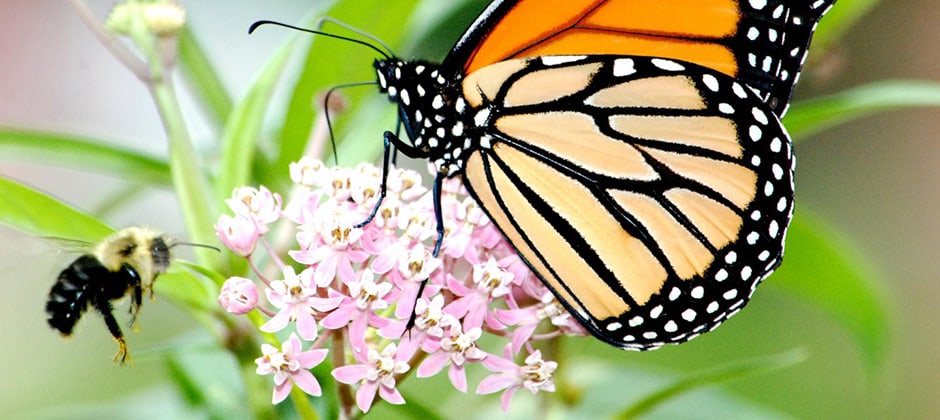Share this article
Monarchs, bees use cultivated milkweeds as much as wild ones
Monarch butterflies and bee species use ornamental milkweed plants — the kind sold at garden centers — just as much as they use native plants, researchers found.
“There’s a ‘native-plant’ movement going on right now,” said Adam Baker, a researcher at the University of Kentucky College of Agriculture, Food and Environment and lead author of the study published in PeerJ. “We wanted to look a bit deeper into that, especially the use of cultivated native host plants in conservation gardens.”
Baker knew that cultivars — natural variants of native plants crossbred or hybridized with ornamentals for their appearance and disease resistance — can provide nectar and pollen at times where wild plants lapses.
He and his colleagues wondered how well monarch butterflies (Danaus plexippus) and bees benefited from them. They specifically wondered if the insects would choose the cultivars at the same rate that they would choose wild species, whether for laying eggs, for a food source or for defensive reasons.
He and his colleagues wondered if monarch butterflies (Danaus plexippus) and bees would benefit from them as well. They specifically wondered if monarchs would use cultivars at the same rate they chose wild species, whether for laying eggs, or for rearing their young.

One of the six experimental gardens showing variation in height, form and bloom color among the native milkweed species and cultivars. Credit: Credit: Adam M. Baker
The team conducted an experiment using two milkweed species — swamp and butterfly milkweed — as well as three of their respective cultivars. They set up six gardens with different varieties of the plants. Each garden block had four plants of each type. “We were mainly looking at the comparison between cultivars and wild types,” Baker said.
They grew the plants for two years, and every other week they counted the number of monarch eggs and larvae on individual plants. They also looked at the defensive characteristics of the plants including the latex that exudes from the leaves and the compounds that monarch butterflies sequester for their own chemical defense. Finally, they looked at which plants the caterpillars consumed the most by measuring the weight and development stages of the monarchs on the different plants. The team also looked at the bee communities by collecting samples from the different varieties. They identified more than 2,400 bees from five bee families and 17 genera.
In terms of monarch colonization, the researchers found no difference between the wild plants and the cultivars. This told the team that female monarchs looking to lay eggs aren’t going to discern between the two and that both are suitable for egg laying. The team also found that both types of plants were nutritionally viable. “We found absolutely no differences between cultivars and wild types in terms of growth and development of their larvae,” Baker said.
For the defensive metric, the team did find a bit of a difference. One of the cultivars, a white flowered swamp milkweed called Ice Ballet, stood out. It had greater amounts of latex and defensive compounds than wild types, they found, but not enough to influence the growth and development of caterpillars.
“I think the story is, monarchs are pretty adaptive and slight changes in defensive characteristics are easily overcome,” Baker said, “although other studies have shown that something like selecting for red leaf color may change the chemistry of the leaf and make it harder for them to digest.” The cultivated milkweeds in this study behaved very similarly to the wild types, Baker said, this is good news as people who plant these types of flowers in their gardens as they still benefit monarchs and other pollinators.
Bees, on the other hand, saw a positive effect from the cultivars. “As far as bees were concerned, there most certainly were benefits and interesting things going on,” he said. Some of them had much greater diversity of bee species visiting them than the wild types.
“What it means to me is that at least in this system, it is OK to incorporate ornamental varieties in gardening,” he said. “We would never promote putting them into native areas or in nature centers, but for a garden setting, they seem to be OK.”
Header Image: A monarch butterfly and a bee visit a milkweed plant. Credit: Jim Hudgins, U.S. Fish and Wildlife Service








